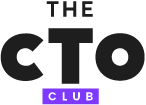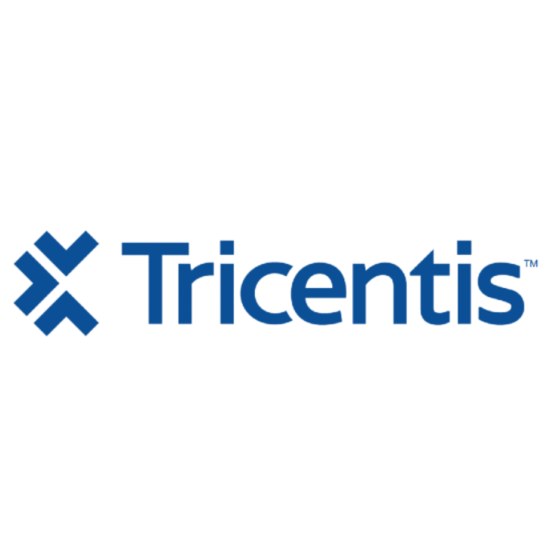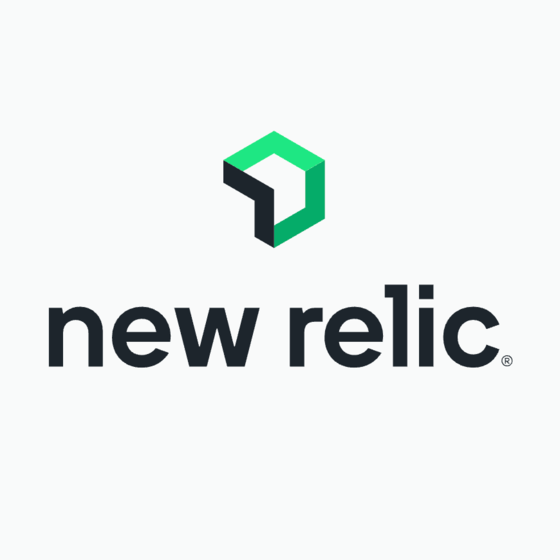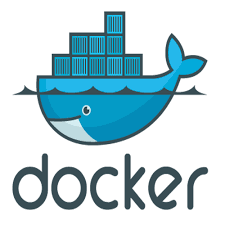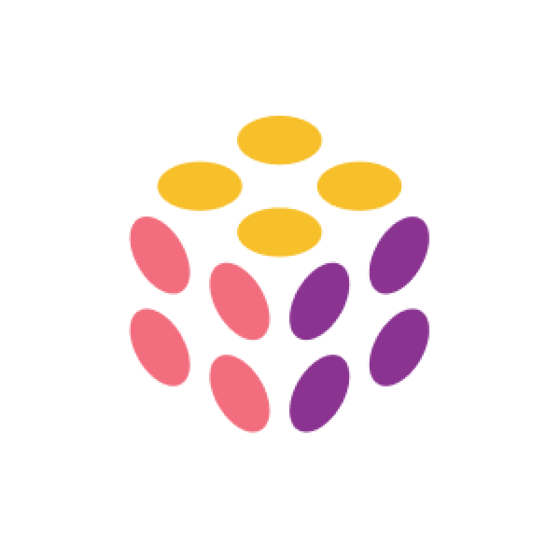Best Test Management Software Shortlist
Here’s my shortlist of the best test management software:
Our one-on-one guidance will help you find the perfect fit.
The best test management software helps teams organize test cases, run structured test cycles, and track results across projects without relying on scattered spreadsheets or disconnected tools. It improves visibility into test coverage, reduces duplication, and helps QA and development stay aligned.
If you’re dealing with version control issues, hard-to-trace results, or unclear testing responsibilities, you’ve likely felt the pain of a disorganized testing process. These problems slow releases, hide coverage gaps, and make debugging harder than it should be.
I’ve worked directly with QA teams to evaluate test management tools in fast-paced development environments, focusing on how well they handle real-world workflows, integrations, and reporting needs.
This guide breaks down the platforms that bring structure to test cycles, surface useful insights, and help your team deliver with confidence.
What is Test Management Software?
Test management software is a tool that helps teams plan, organize, and track their software testing efforts. It's mainly used by QA testers, developers, and project managers who need to manage test cases, monitor progress, and make sure testing stays on track.
Features like test case organization, execution tracking, and reporting help teams reduce confusion, stay aligned, and catch issues early. These tools make testing easier to manage and help teams deliver better software with less hassle.
Best Test Management Software Summary
| Tool | Best For | Trial Info | Price | ||
|---|---|---|---|---|---|
| 1 | Best for test case management and bug tracking | 14-day free trial | Pricing upon request | Website | |
| 2 | Best test management tool with a free plan for up to 3 users | Free plan available | From $14.50/user/month | Website | |
| 3 | Best to transition to agile while still supporting waterfall projects | 14-day free trial + Free demo | Pricing upon request | Website | |
| 4 | Best all-in-one test management tool with custom dashboards and extensive integration | 30-day free trial + free demo | From $37/user/month | Website | |
| 5 | Best for its DevOps workflow support through integrations | 30-day free trial | From $1.38/user/month (first 100 users) | Website | |
| 6 | Best for Salesforce testing | Free trial available | Pricing upon request | Website | |
| 7 | Best for its real-time analytics | Free plan + demo available | Pricing upon request | Website | |
| 8 | Best test management tool with centralized collaboration | Free plan available | From $29/user/month (billed annually) | Website | |
| 9 | Best for requirements, test case and defect management | 30-day free trial | From $38/month | Website | |
| 10 | Best to unite manual and automated testing | 30-day free trial | $30/user/month | Website |
-

Docker
Visit WebsiteThis is an aggregated rating for this tool including ratings from Crozdesk users and ratings from other sites.4.6 -

Pulumi
Visit WebsiteThis is an aggregated rating for this tool including ratings from Crozdesk users and ratings from other sites.4.8 -

GitHub Actions
Visit Website
10 Best Test Management Software Reviews
Kualitee is a cloud-based test management tool that supports both manual and automated testing. Testers are able to create and import test cases and associate them with builds and requirements to get complete end-to-end traceability.
With its feature of defect management, Kualitee runs a complete testing flow from test planning to execution and issue tracking. It’s an all-in-one tool where testers, developers, and project managers can collaborate.
The tool allows users to run custom test, bug, and test execution reports, and includes functionalities for requirement planning. Their interactive dashboards are intuitive and user-friendly.
Kualitee integrates with Jira, Selenium, Jenkins, and Bitbucket. The tool also offers a mobile app for increased ease of use.
Pricing starts at $15/user/month. Kualitee also offers a free 7-day trial.
Testiny is a test management tool that facilitates test planning, execution, and reporting activities. Its customizable workflows help teams efficiently manage test cases, requirements, and defects. The software can handle various testing processes, such as functional, performance, and regression testing.
Users can create test plans in the software that outline the testing requirements, test cases, and expected results. Test plans can be assigned to team members, and the reporting system can generate reports that provide insights into the testing process. This feature helps users identify bugs, track issue resolution, and ensure testing aligns with overall project goals.
The software supports collaborative test management through document sharing, team chats, and task assignments. Users can create custom automated testing scripts that can be executed repeatedly, and features can be customized to meet specific needs. Automation features help streamline testing processes and reduce risk of human error. The software's test run view feature allows users to track the progress of their tests and identify which tests have been completed successfully and which require further attention.
Other bug-tracking systems like JIRA, Bugzilla, and Trac work with the software. Paid plans start from $17/user/month, and a 14-day trial is available. Teams of 3 users or less can also access a free plan.
Best to transition to agile while still supporting waterfall projects
Tricentis qTest is an agile test management tool that is scalable and can work for businesses of all sizes. The software provides DevOps and QA testing teams with a unified view of tasks and activities across the agile software development lifecycle (SDLC). Having a centralized control and orchestration of all automated workflows makes it easier to embed testing within continuous development pipelines. QA and development teams can leverage the software to transition to an agile methodology or to support their waterfall projects.
DevOps and QA teams can reuse their test cases and share them across projects so they can create and promote set standards and scale their best practices. This also makes it easier to build and maintain more test cases. Users can combine or centralize their solutions for automated, exploratory, and manual testing activities in the same software. They can also create shareable, customized reports on their testing data and activities using one of over 60 out-of-the-box configurable reports.
The software has native integrations with some of the most widely used solutions for product planning, development, and testing like Selenium, Jira, Jenkins, and GitHub.
Pricing for Tricentis qTest starts at $1,200 per user/year. A 14-day free trial is available.
TestRail
Best all-in-one test management tool with custom dashboards and extensive integration
TestRail is a test management platform for QA and development teams to manage test cases, plan and execute tests, and track results from both manual and automated testing. It can be used in waterfall or agile projects. You can organize test cases in folders and sections, and customize test cases with templates, statuses, and fields.
The TestRail API allows test automation engineers to push in test results from automated scripts so you can track results across both manual and automated tests. TestRail also offers dashboards and reports to help your team communicate test pass / fail rate, track test cycle progress, and assess the current level of risk of a new release.
TestRail integrates with Jira, GitHub, GitLab, Asana, and 20+ other issue-tracking or defect management tools. It supports reporting of tests run via Selenium, Cypress, Appium, Cucumber, Junit, TestNG, Pytest, or any other test automation tool or framework using the TestRail API. You can also integrate TestRail with CI/CD pipelines like Jenkins, GitHub Actions, GitLab CI, Azure DevOps and more.
TestRail costs from $37/user/month and offers a 30-day free trial.
Best for its DevOps workflow support through integrations
Tricentis Test Management is a test management software that integrates with different planning, testing, and DevOps tools, including Jenkins, Selenium, and Jira, which allows teams to have a unified view of the software testing process.
This management solution helps you approach testing strategically and collaboratively. This is achieved through several useful features, including qTest Manager to plan the testing phase, qTest Pulse for automating events, qTest Launch for test automation, and qTest Explorer for documentation.
Tricentis Test Management uses an automated, codeless, and AI-driven software testing approach, allowing you to accelerate software release speed. Additionally, this solution is scalable and data migration from spreadsheets and old test management solutions is easy, allowing you to seamlessly continue software testing when first adopting Tricentis. This platform can track, organize, and report on the testing process, help build custom workflows, manage automated testing, record and annotate testing sessions, and use a customizable dashboard for analytics and reporting.
Tricentis allows users to seamlessly switch from old management systems to Tricentis and integrate with several Agile and DevOps tools. These integrations can be customized to support event-driven workflows with any third-party tool, including Bamboo, Azure Pipelines, Teams, and Slack.
Tricentis Testim Salesforce is an AI-powered testing tool designed to enhance the quality of your Salesforce applications. It enables your team to create and manage tests without writing code, ensuring that your Salesforce environment functions smoothly.
The tool has AI-enabled locators that identify dynamic elements within Salesforce Lightning. This means your tests are more stable and require less maintenance, as the tool adapts to changes in the user interface automatically. This adaptability ensures that your testing keeps pace with any updates or modifications in your Salesforce environment.
Additionally, Tricentis Testim Salesforce offers pre-built, reusable test steps for common Salesforce operations. This allows your team to quickly assemble tests for routine tasks without starting from scratch each time.
Other features include AI-powered test creation, Salesforce integration, real-time error analysis, automated test scripting, enhanced test coverage, error reduction, direct API integration, real-time synchronization, configurable setups, cloud-based testing, distributed execution, and resource optimization.
New Relic is a software analytics product that's all about giving you real-time insights into your software performance. It gives you the data you need to figure out why something's not working and how to fix it. Plus, it's got a great feature called APM (Application Performance Monitoring) that lets you see how your software is performing in real-time.
Another standout feature is the user interface. It's clean, intuitive, and easy to navigate. It also includes dashboards that let you visualize your data in a way that makes sense to you. You can customize them to show the metrics that matter most to you. It's all about giving you the information you need, when you need it.
Features include backend monitoring, Kubernetes monitoring, mobile monitoring, model performance monitoring, infrastructure monitoring, log management, error tracking, network monitoring, vulnerability management, and browser monitoring.
Integrations include over 500 apps, like AWS, Google Cloud, and Microsoft Azure; CI/CD tools like Jenkins, CircleCI, and Travis CI; communication tools like Slack and PagerDuty; and other monitoring and analytics tools like Grafana, Datadog, and Splunk. It also has an API you can use to build custom integrations.
New Relic costs from $49/user/month and offers a free plan for 1 user and 100 GB/month of data ingest.
TestCollab is a flexible test management tool that helps development teams carry out testing effectively and avoid functional and compliance failures. It offers a centralized test repository for teams to keep all test cases, test plans, requirements, and conversations in one shared space.
The platform has collaborative features, allowing users to create test plans and assign them to groups of testers, promoting workflow efficiency. The tool includes an automatic work assignment feature, which helps in distributing tasks among team members, giving them the opportunity to focus on more critical tasks.
Furthermore, TestCollab lets users create custom fields and tags tailored to the specific project at hand. This enables a unique workflow for each project, allowing for the creation of rich test cases and test plans with flexibility. It also provides real-time charts and visual highlights to monitor the team's progress and workload. This helps in spotting potential problems early and keeping the work on track.
The tool also offers a QA Copilot, an AI-powered assistant that takes plain English test instructions and creates scripts, runs the tests automatically, and analyzes the outcomes.
TestCollab's paid plans start from $29/user/month with a free plan available.
aqua is an easy-to-use German test management system known for providing an enterprise-level service for customers of all packages for an affordable price (packages start from 39 euro/month). With aqua, you can organise tests & teams, run testing scenarios of any complexity and scale, and go from manual to automated testing smoothly. aqua's real-time analytics & enterprise-level reports give clarity over QA & dev workflows: you see what to improve & automate.
Since 2008 aqua has been serving as a test management and ALM solution for the biggest enterprises in Germany. From 2022, they also launched an SMB cloud tier which includes enterprise-level support and flexibility for an affordable price (from 39 euro/user/month).
Every package goes with the possibility of joining an unlimited number of 'Basic' free users, who can view reports, as well as create and execute test cases (perfect for manual testers). This helps you save costs by providing a paid aqua version only for test managers and automation testers.
TestGear helps you release quality software in the shortest time possible. Backed by 30 years in QA, the TestGear team builds tools for testers, by testers. With TestGear, less time is spent on routine QA tasks, so testers can spend more time on creative work.
Key features include the ability to unite manual and automated testing with transparent reporting on software quality; traceability of user stories, test cases, and bugs in Jira and other trackers; assignment of test cases among QA engineers tasks using workload distributor; and team engagement via a singular gamification system.
Using TestGear can help accelerate time to market and cut down time spent on everyday, mundane tasks.
TestGear boasts integration with any CI/CD system via webhooks.
TestGear costs from $30/user/month and comes with a 30-day free trial.
Other Noteworthy Test Management Software
Below is a list of additional test management software that I shortlisted but did not make it to the top 10. Definitely worth checking them out.
- IBM Rational Quality Manager
For team collaboration
- TestLink
For an open-source option
- Micro Focus Silk Central
For bug and issue recreation
- QA Wolf
End-to-end testing service run by a team of expert QA engineers
- Tuskr
For its affordable, full set of test management features
- testomat.io
For organizations adopting AI in QA
- PractiTest
End-to-end SaaS test management platform for managing QA efforts in one place.
- Testsigma
For Agentic test management
- Xray
Jira test management app that uses Jira native issue types to manage testing artifacts
- TestMonitor
For professional-grade test runs with little experience required
- Testpad
For checklist-style test management
- Testmo
For insights into real-time and historical testing
Selection Criteria for Choosing Test Management Software
Choosing the right test management software is crucial for managing, organizing, and optimizing the testing process within a project. As a professional who has spent significant time in this field, I've evaluated dozens of testing and requirements management software, but in this case, I was looking for tools that stand out in their core functionality, key features, and usability. The focus was on a balanced blend of adaptability, ease of use, and robust features tailored to diverse testing needs.
Core Functionality
- Test Planning: Ability to define and manage test plans, set objectives, and organize resources
- Test Execution: Capability to run and track individual test cases, record results, and log defects
- Integration with Development Tools: Easy connection with development environments, CI/CD pipelines, and issue-tracking systems
- Reporting and Analytics: Detailed insights into test progress, success rates, and bottlenecks, allowing for data-driven decisions
Key Features
- Collaboration: Real-time collaboration support that helps teams work in unison on test design and execution
- Automation Support: Aiding in test automation by connecting with popular automation tools, reducing repetitive manual tasks
- Customization: Flexibility to tailor workflows, fields, and templates to match the unique requirements of the project
- Traceability and Reusability: Tracking the lineage of test artifacts and enabling the reusability of test components to reduce redundancy
- Security and Compliance: Ensuring data protection and adherence to industry-specific standards and regulations
Usability
- Intuitive Interface: The design should enable easy navigation through test artifacts, requiring minimal clicks for common tasks
- Onboarding and Training: Comprehensive documentation, tutorials, or training programs to help new users grasp the functionalities swiftly
- Customer Support: Responsive and knowledgeable support teams capable of providing timely resolutions
- Scalability: A solution that scales with the growing needs of the project, accommodating more complex scenarios without a degradation in performance
- Role-based Access: Easy configuration of role-based access, enabling appropriate permissions and restrictions based on user roles within the testing team
Other Test Management Software-Related Reviews
Test Management Software FAQs
Here are some answers to common questions about test management software:
What integrations are essential for test management software to support a modern CI/CD pipeline?
You should prioritize test management tools that integrate seamlessly with source control systems like GitHub or GitLab, CI tools such as Jenkins or CircleCI, and automation frameworks like Selenium. API access and native integrations with project management tools (e.g., Jira) are also important for efficient automation and traceability.
How can test management software support regulatory compliance or audit needs?
Test management software helps by maintaining thorough test documentation, clear version histories, and traceable links between requirements and test cases. Choose tools that offer comprehensive audit trails and customizable reporting to simplify compliance with standards like ISO, FDA, or HIPAA.
What's the best way to migrate test cases from legacy tools or spreadsheets into a new test management platform?
Most modern test management platforms offer import utilities for CSV or Excel files. Before migrating, clean up your legacy data and map fields to the new system’s structure. Validate small batches first to catch errors early, and reach out to the vendor’s support team if you need help with bulk imports.
How does automated testing differ from manual testing in modern test management tools?
Automated testing uses scripts or frameworks to run tests without human intervention, boosting speed and coverage. Manual testing, managed within the same platform, lets testers execute complex scenarios hands-on. Many tools let you manage both types side by side and report on them together.
How do I choose the best test management tool for my needs?
Start by listing your team’s must-have integrations, preferred workflows, and project size. Evaluate how each platform manages reporting, security, and scalability. You should also read user reviews and test the software with a free trial to see how it fits your team before committing.
Summary
Test Management Software is critical in the modern development lifecycle, aiding in the systematic organization, execution, and tracking of test cases. Choosing the right tool can impact the testing process's efficiency, collaboration, and overall success.
Key Takeaways:
- Understanding Specific Needs: Before selecting a tool, identify your requirements, such as the scale of testing, integration needs, and the level of automation desired. The right choice should align with your project's complexity and the team's workflow.
- Considering Usability and Features: Look for tools that offer an intuitive interface and the key features most relevant to your use case. Whether it's support for manual or automated testing or specialized reporting capabilities, ensure that the tool provides what's most essential for your testing process.
- Evaluating Pricing and Flexibility: Analyze the pricing models to find a solution that fits within your budget while meeting your needs. Consider free or freemium models if suitable, but also remember that investment in a more comprehensive tool may pay dividends in efficiency and effectiveness.
Join for More Insights
Boost your SaaS growth and leadership skills. Subscribe to our newsletter for the latest insights from CTOs and aspiring tech leaders. We'll help you scale smarter and lead stronger with guides, resources, and strategies from top experts!
